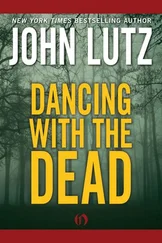This time the evidence is current and, if not conclusive, is very strongly indicative. The converse intelligence failure—a wrong conclusion that Iran is not pursuing a nuclear weapon—may come to pass, driven by mistaken assumptions opposite to those regarding Iraq the second time around. Everyone wants to be sure not to make the mistakes we made in 2003, just as then no one wanted to repeat the mistakes of 1990. This time there could well be nuclear consequences, ranging from blackmail to war.
10:
ALLIES: WHY FRIENDS PROLIFERATE
We cannot live in a situation where Iran has nuclear weapons and we don’t. It’s as simple as that. If Iran develops a nuclear weapon, that will be unacceptable to us and we will have to follow suit.
UNNAMED SAUDI ARABIAN SENIOR OFFICIAL, QUOTED IN GUARDIAN.CO.UK, JUNE 29, 2011
WHAT TURNS AN ALLY INTO A NUCLEAR PROLIFERATOR? THE COMMON denominator in every single ally proliferation case since the United States ushered in the nuclear age in 1945 is this: the proliferator judged that its superpower ally’s guarantee to protect it—and its own fundamental national security interests—was no longer ironclad. Thus the stark Eighth Lesson of nuclear-age history: ALLY PROLIFERATION CAN BE PREVENTED ONLY BY SUPERPOWER CONSTANCY.
In his 1989 memoir, From Hiroshima to Glasnost , Paul Nitze offers a striking historical example of how important America’s nuclear umbrella is to those it shelters. During the Cuban Missile Crisis President Kennedy decided to secretly remove highly vulnerable, obsolete Jupiter intermediate-range missiles from Turkey, in order to give the Soviets a consolation prize in return for withdrawing their nuclear missiles from Cuba. The Jupiter missiles were based above ground, in range of Soviet medium-range missiles and bombers. They were liquid-fueled, meaning that getting them ready for launch took hours. Yet the Turks still wanted the missiles, to “couple” their strategic fate to America’s. Turkey was a vital ally, having joined NATO in 1952. It was a key base for intelligence missions, including reconnaissance flights over the Soviet Union.
This chapter looks at three wartime allies of the United States—the USSR, the UK, and France, which in vastly different ways started nuclear programs before World War II was over. It looks at Israel’s unacknowledged but widely known nuclear program. It looks at the Suez crisis of 1956, and specifically the U.S. response to it, to suggest how America’s actions led its allies to believe they needed nuclear weapons of their own.
World War II: Our Russian Wartime Ally of Convenience
THE SOVIET bomb is a partial exception to the ally proliferation rule articulated above. Russia was a wartime ally of the United States when it stole U.S. atomic secrets, but hardly a true ally. Stalin knew, long before we did, how vastly the Soviet postwar interests would differ from ours. He was clandestinely planning to ingest Eastern Europe while we were demobilizing our armed forces in anticipation of peaceful coexistence and a world order organized via the United Nations. Sentiment for our Russian ally was buoyed by knowledge of its staggering wartime death toll of 20 to 25 million, plus vast land and city devastation—a human tragedy on a grand scale to which Stalin, mass murderer of a comparable number of his subjects plus jailer of a second comparable number, was considerably less moved than we. By the time of “Joe-1,” the U.S. nickname for Russia’s August 1949 atomic bomb test, Americans had received a painful education as to Stalin’s intentions, courtesy of the Soviet subjugation of Eastern Europe and the subsequent 1948–1949 Berlin airlift that saved West Berlin from a Communist blockade.
The Soviet “ally” case was one of self-delusion on the part of the United States, which invested the man FDR called “Uncle Joe” with personal qualities and policy aims that simply did not fit the real person. Thus Truman at first considered Stalin “a moderating influence in the present Russian government.” During the 1948 presidential campaign Truman said, “I like Old Joe” and called him “a prisoner of the Politburo.” In fact, Stalin was a paranoid, genocidal monster who never intended his alliance with America and the West to be anything but a necessary expediency in order to survive the Nazi onslaught. Thus a Soviet nuclear weapon program was inevitable, given Stalin’s intent to pursue world domination by launching the Cold War. The next three cases, however, involved real allies.
THE FOUNDATIONAL work and leadership of, among others, Ernest Rutherford meant that Britain scientifically led atomic studies for 30 years. Rutherford died unexpectedly before the war began, but his colleagues and students, as well as British officials, were involved in the pre– Manhattan Project research stages. In 1943, the U.S., UK, and Canada signed the Quebec Agreement, which governed atomic research and development between the three allies and also made use of the bomb contingent on the consent of all signatories. The 1944 Hyde Park Agreement further detailed U.S.-UK cooperation. The British contribution—code-named Tube Alloys—to the huge 1942–1945 operation at Los Alamos was notable. By the end of 1945 the British had plans to make enough plutonium for 15 bombs per year.
In 1946, the United States passed the Atomic Energy Act (also known as the McMahon Act after its senatorial sponsor, Connecticut Democrat Brien McMahon). It placed harsh restrictions on sharing of atomic information with other countries, none excepted. The law also established the Atomic Energy Commission to provide civilian control of nuclear matters. The Senate passed the data-sharing restrictions unaware of the secret wartime agreements. In 1958 the McMahon Act was modified to restore data sharing with the UK, Canada having decided not to pursue nuclear weapons development.
But even before the 1958 modification the act could hardly stop America’s main Manhattan Project ally. In 1946 Britain launched a program that brought a nuclear reactor online in four years and produced enough plutonium by 1952 to enable an October test near Australia. Britain’s leadership pushed nuclear programs partly to give Britain’s word greater weight in world affairs, but mainly because during the first decade after the Cold War the major allied effort to launch planes targeting the Soviet Union would come from bases in Britain. This made Britain the top target for a Soviet attack. Even before the United States, total war would mean the Soviets’ utter destruction of England. Only after the advent of the intercontinental-range B-52 (1955) and U.S. ICBM (1958) did America become the number-one threat to the USSR.
The British A-bomb was followed in 1954 by a decision to build an H-bomb. Britain wanted this second bomb for much the same reasons it had wanted the first. The H-bomb, the British believed, would give strategic weight to what Britain did on the international scene and help keep Britain a world power. It would also deter against a Soviet first strike—or a retaliatory Soviet strike against Britain if the U.S. struck the Soviets preemptively. British leaders knew that a five-megaton H-bomb dropped on London would incinerate everything within a two-mile radius, dig a crater three-quarters of a mile across and 150 feet deep, destroy all housing within a three-mile radius, and badly damage structures within a radius of three to seven miles. [37] Future prime minister Harold Macmillan also stated during the 1955 debate in the House of Commons that Britain might wish to use tactical nuclear weapons in the Middle East or in Asia.
The British detonated their first H-bomb in 1957.
Читать дальше












